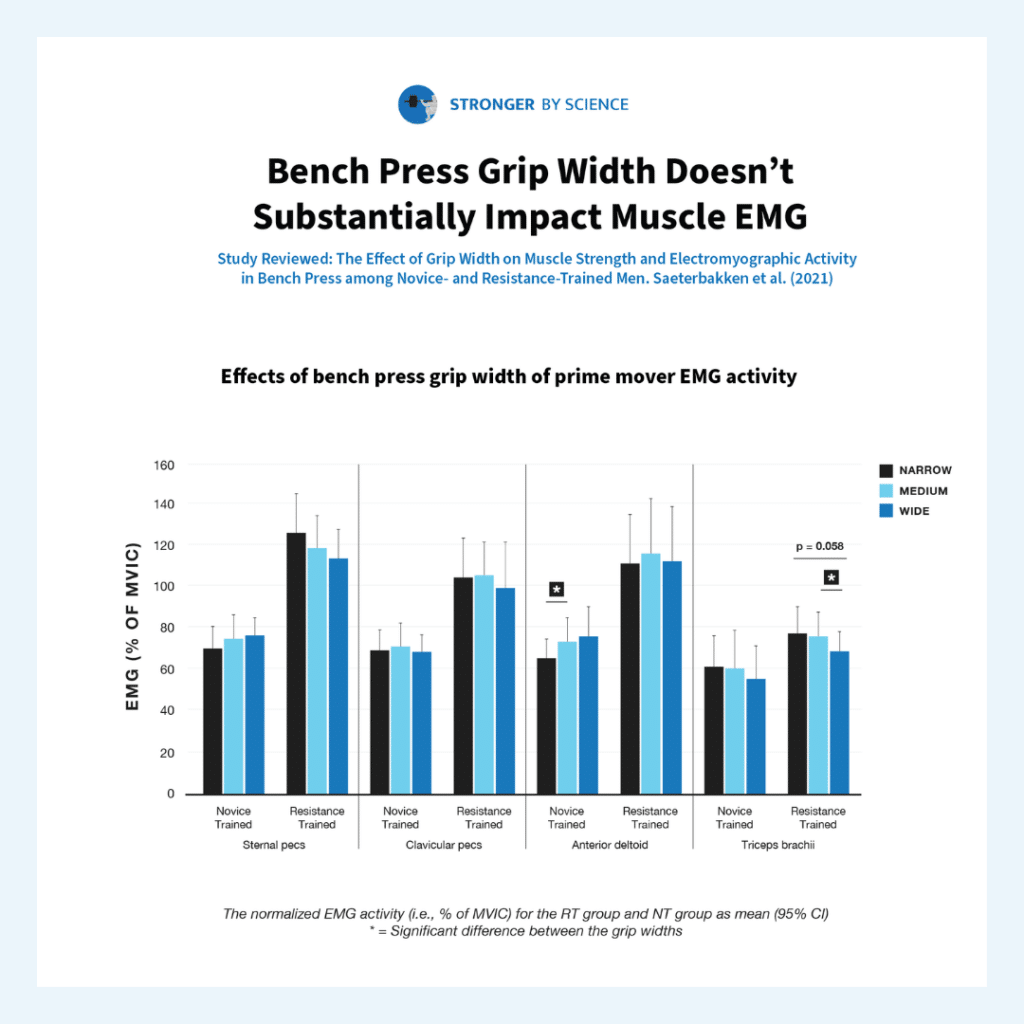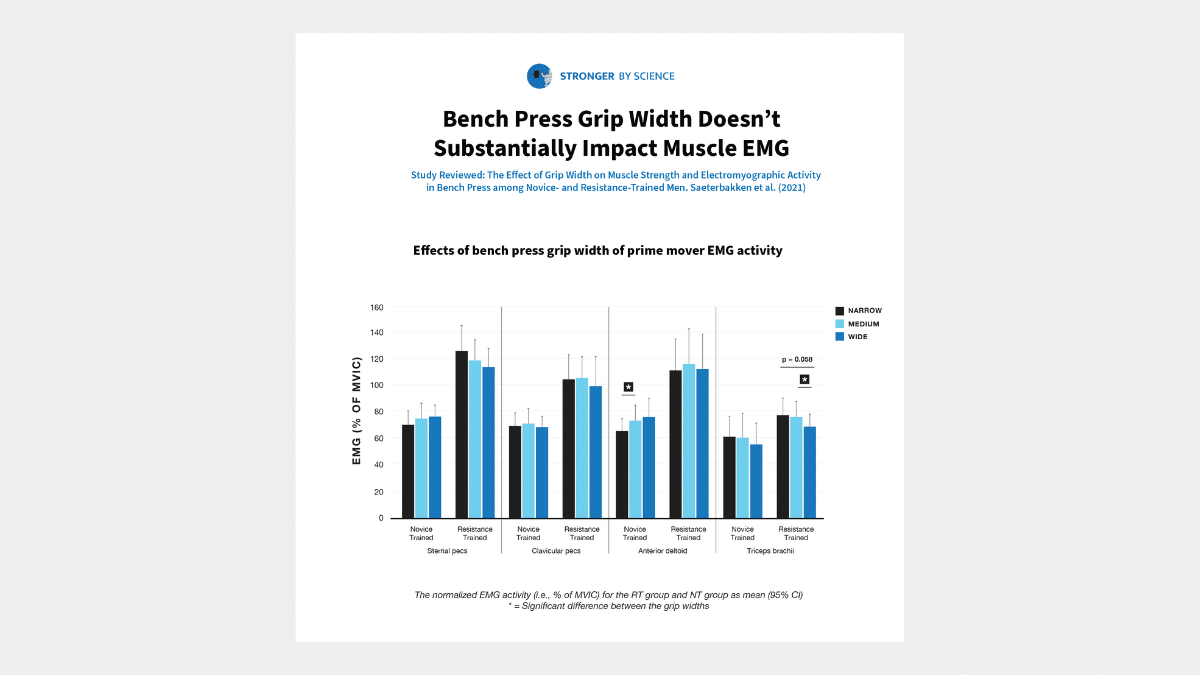Back in Volume 1 of MASS Research Review, I reviewed a study (article requires MASS subscription) showing that, in elite lifters, grip width doesn’t have a very large effect on the electromyographic (EMG) response of the pecs, triceps, and front delts (study link). Another study published earlier this year (also reviewed in MASS) had similar findings. However, these findings are always met with incredulity. After all, from day 1 in the gym, people tell us that wide-grip bench targets the pecs, while close-grip bench targets the triceps. With that in mind, I figured it was worth discussing the present study in a research brief, just to alert you to another example of grip width, yet again, having very little impact on EMG responses of the prime movers in the bench press.
In the present study, two groups of young men had their pec, anterior deltoid, and triceps EMG assessed during a 6RM bench press. One group of men (N = 15) was considered “resistance-trained” – they had to have at least one year of continuous resistance training experience and bench press at least 125% of body mass. The other group (N = 13) was considered “novice-trained” – they needed to be familiar with the bench press, but they needed to report that they’d performed no resistance training within the prior six months.
Each subject worked up to a 6RM wide-grip (81cm grip width), narrow grip (the lifter’s biacromial breadth), and medium grip (the midpoint between wide-grip and narrow grip) bench press in a randomized order, while electrodes recorded the EMG amplitudes of their sternal pecs, clavicular pecs, triceps long head, and anterior deltoid. EMG amplitudes were averaged over the course of all six reps, and normalized against EMG amplitudes obtained during maximum voluntary isometric contractions for each muscle.
Within the resistance-trained subjects, triceps EMG was significantly greater in the medium-grip bench than the wide-grip bench, and within the novice-trained subjects, anterior deltoid EMG was significantly greater in the medium-grip bench than the narrow-grip bench. There were no other significant differences within either group for any of their prime movers. And, of note, the significant differences that existed weren’t particularly large, as you can see in the figure.

Now, keep in mind, all standard EMG caveats apply here. We can’t necessarily assume that differences in EMG will always result in differences in muscle growth, and we can’t necessarily assume that similarities in EMG will always result in similar muscle growth. However, when we’re dealing with biomechanically similar movements and identical relative loading, those would be slightly less tenuous assumptions to make. At minimum, until we have longitudinal evidence investigating the long-term effects of bench press grip width on pec, triceps, and anterior deltoid growth, EMG research is some of the strongest (albeit still weak) indirect evidence we have. Based on what we know now, it doesn’t appear that bench press grip width has a notable impact on the muscles primarily targeted by the bench press.




